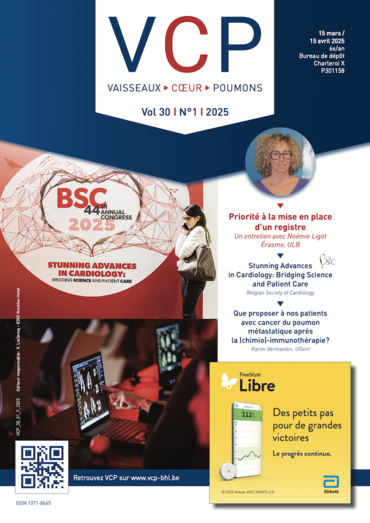Le nez électronique est une technique émergente dans le diagnostic et le traitement du cancer du poumon. Les techniques de nez électronique utilisant des mesures des composants de l’air expiré permettent de détecter un cancer du poumon avec une sensibilité de 71 à 96% et une spécificité de 33 à 100%. Aujourd’hui, nous manquons toutefois de méthodes d’échantillonnage et d’analyse ainsi que de techniques de validation standardisées, ce qui empêche d’effectuer une comparaison entre les études et la mise en œuvre clinique. Une fois ces obstacles surmontés, l’usage du nez électronique pourra se généraliser dans le cadre du cancer du poumon.
Le cancer du poumon est la principale cause de mortalité par cancer dans le monde. Chez la majorité des patients qui en souffrent, la maladie n’est diagnostiquée qu’à un stade avancé. Afin de réduire la mortalité liée au cancer du poumon, il est essentiel de détecter la maladie à un stade précoce, de préférence chez des patients asymptomatiques (1).
Pour ce faire, différents programmes de dépistage, généralement basés sur la TDM, ont été mis au point. Ces derniers présentent toutefois divers inconvénients, notamment un haut taux de faux positifs ainsi que des limitations en termes de coûts et de sélection du groupe cible adéquat. L’adjonction d’un biomarqueur non invasif pourrait accroître l’efficacité de ces programmes (2). En outre, le traitement pourrait être plus efficace si les médecins disposaient d’un tel biomarqueur pendant le traitement et le suivi (3, 4).
Pour en savoir plus, consultez la version intégrale de cet article.

















